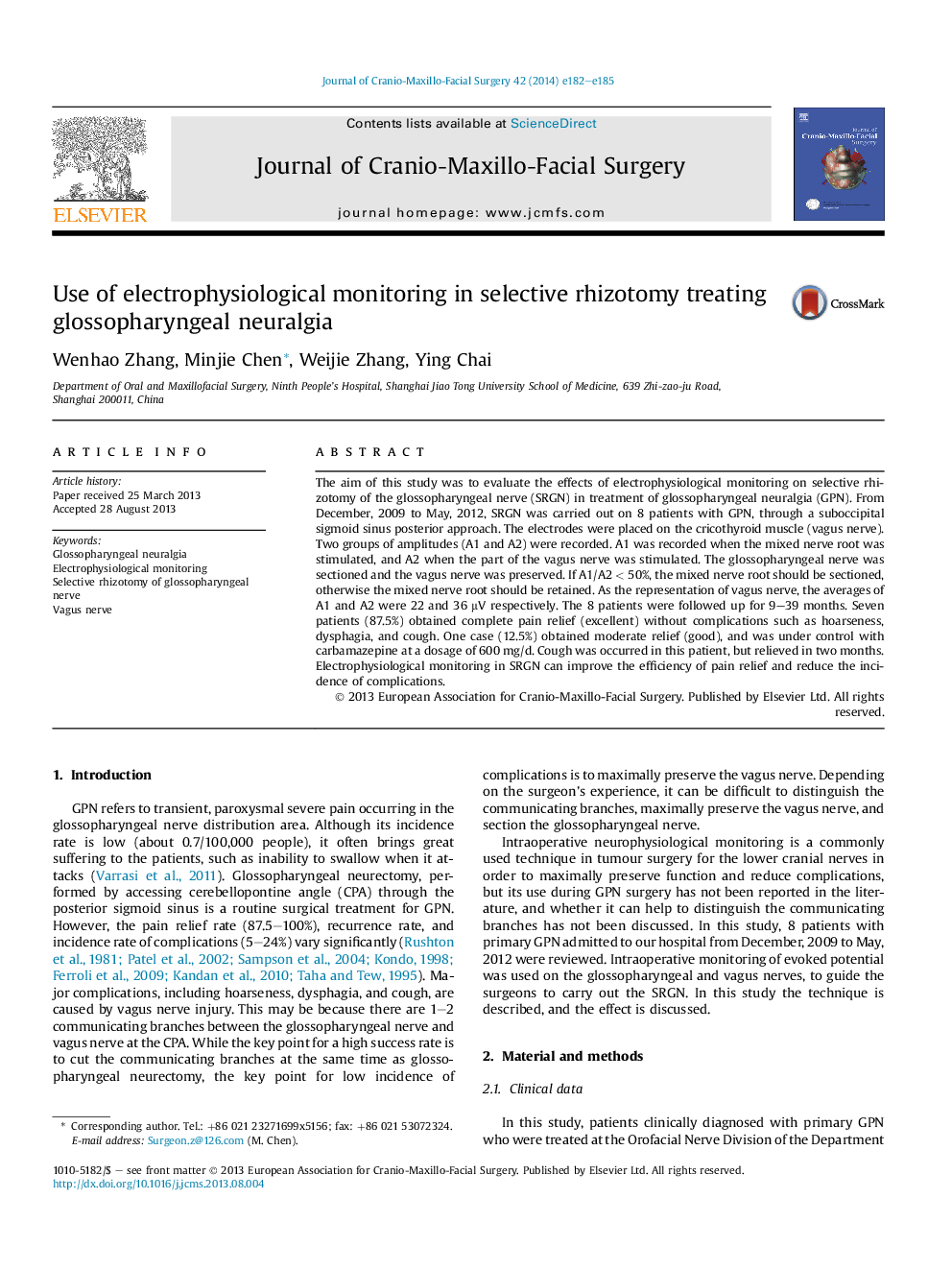| Article ID | Journal | Published Year | Pages | File Type |
|---|---|---|---|---|
| 3142625 | Journal of Cranio-Maxillofacial Surgery | 2014 | 4 Pages |
The aim of this study was to evaluate the effects of electrophysiological monitoring on selective rhizotomy of the glossopharyngeal nerve (SRGN) in treatment of glossopharyngeal neuralgia (GPN). From December, 2009 to May, 2012, SRGN was carried out on 8 patients with GPN, through a suboccipital sigmoid sinus posterior approach. The electrodes were placed on the cricothyroid muscle (vagus nerve). Two groups of amplitudes (A1 and A2) were recorded. A1 was recorded when the mixed nerve root was stimulated, and A2 when the part of the vagus nerve was stimulated. The glossopharyngeal nerve was sectioned and the vagus nerve was preserved. If A1/A2 < 50%, the mixed nerve root should be sectioned, otherwise the mixed nerve root should be retained. As the representation of vagus nerve, the averages of A1 and A2 were 22 and 36 μV respectively. The 8 patients were followed up for 9–39 months. Seven patients (87.5%) obtained complete pain relief (excellent) without complications such as hoarseness, dysphagia, and cough. One case (12.5%) obtained moderate relief (good), and was under control with carbamazepine at a dosage of 600 mg/d. Cough was occurred in this patient, but relieved in two months. Electrophysiological monitoring in SRGN can improve the efficiency of pain relief and reduce the incidence of complications.
